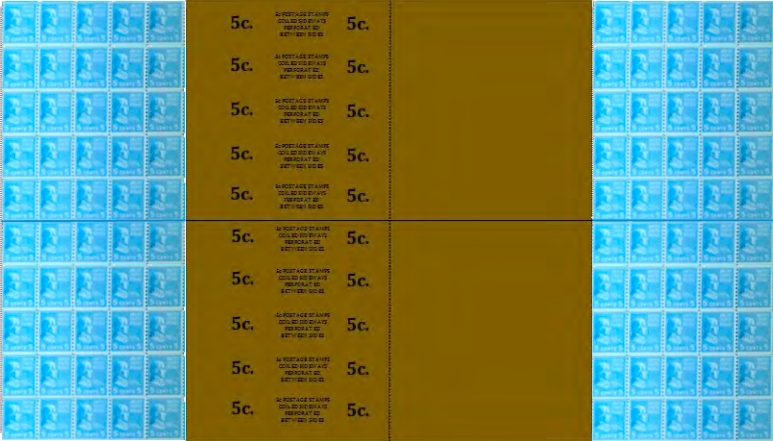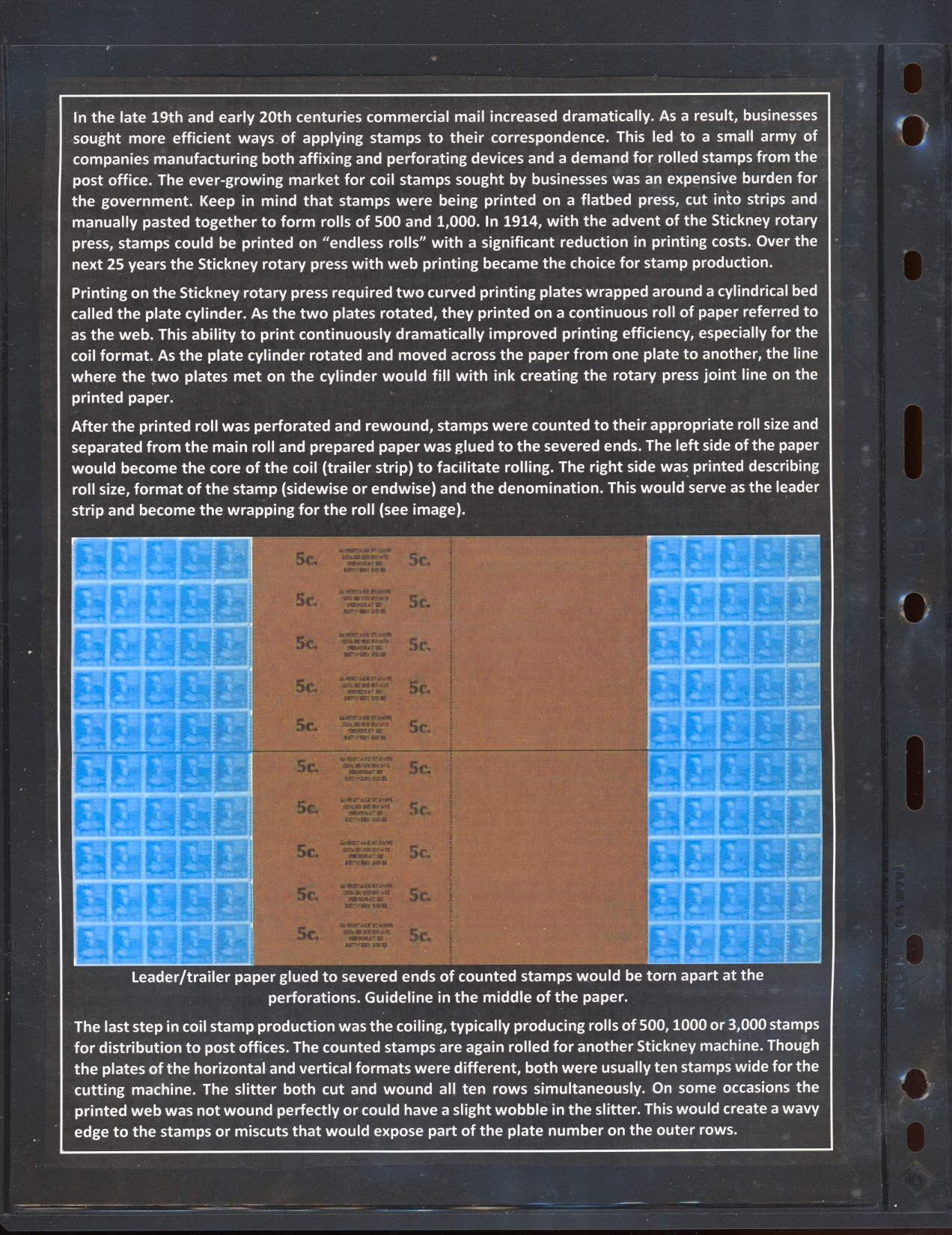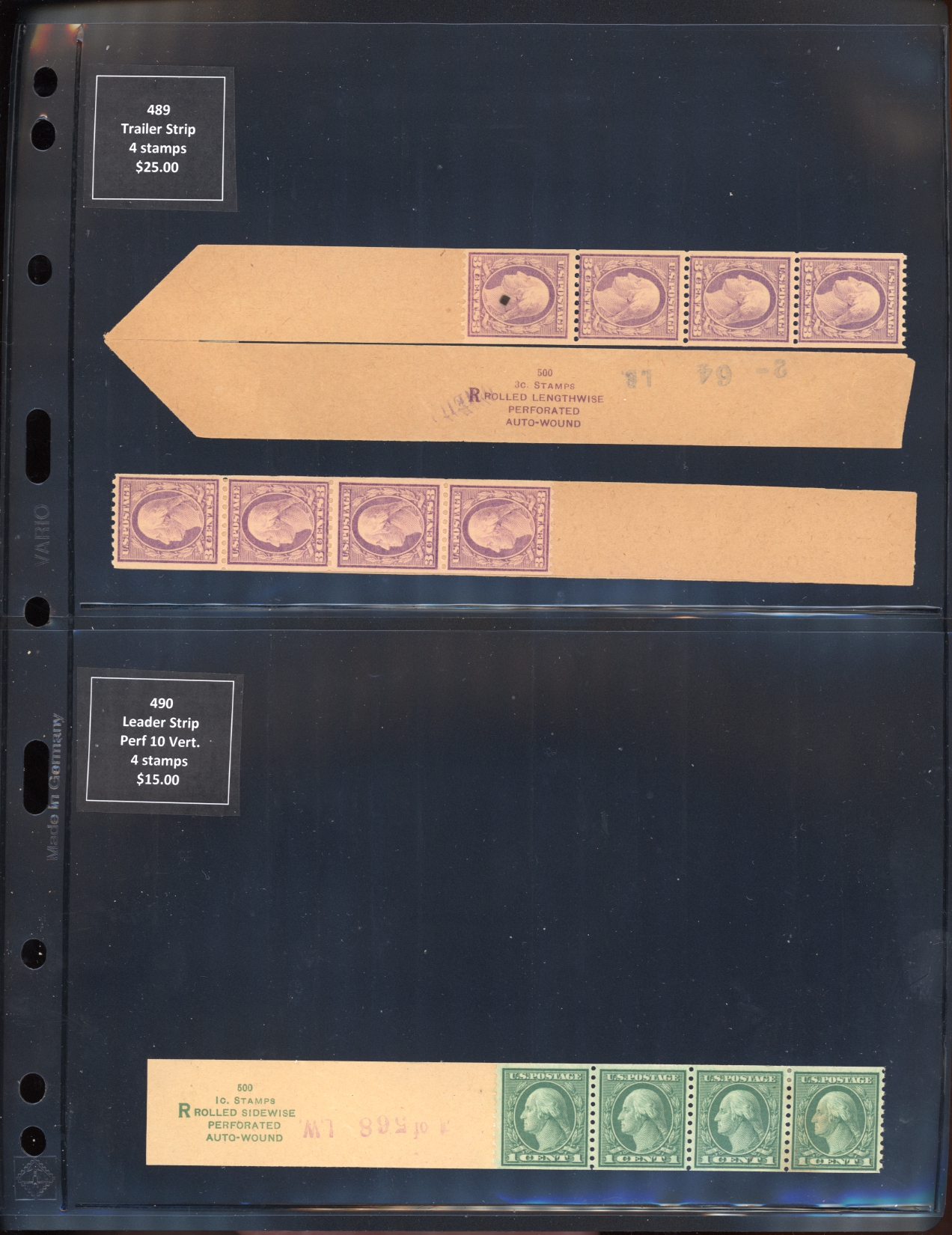US Coil Leaders and Trailers
Exhibit by Don Denman

In the late 19th and early 20th centuries commercial mail increased dramatically. As a result, businesses sought more efficient ways of applying stamps to their correspondence. This led to a small army of companies manufacturing both affixing and perforating devices and a demand for rolled stamps from the post office. The ever-growing market for coil stamps sought by businesses was an expensive burden for the government. Keep in mind that stamps were being printed on a flatbed press, cut into strips and manually pasted together to form rolls of 500 and 1,000. In 1914, with the advent of the Stickney rotary press, stamps could be printed on “endless rolls” with a significant reduction in printing costs. Over the next 25 years the Stickney rotary press with web printing became the choice for stamp production.
Printing on the Stickney rotary press required two curved printing plates wrapped around a cylindrical bed called the plate cylinder. As the two plates rotated, they printed on a continuous roll of paper referred to as the web. This ability to print continuously dramatically improved printing efficiency, especially for the coil format. As the plate cylinder rotated and moved across the paper from one plate to another, the line where the two plates met on the cylinder would fill with ink creating the rotary press joint line on the printed paper.
After the printed roll was perforated and rewound, stamps were counted to their appropriate roll size and separated from the main roll and prepared paper was glued to the severed ends. The left side of the paper would become the core of the coil (trailer strip) to facilitate rolling. The right side was printed describing roll size, format of the stamp (sidewise or endwise) and the denomination. This would serve as the leader strip and become the wrapping for the roll (see image).
The last step in coil stamp production was the coiling, typically producing rolls of 500, 1000 or 3,000 stamps for distribution to post offices. The counted stamps are again rolled for another Stickney machine.







